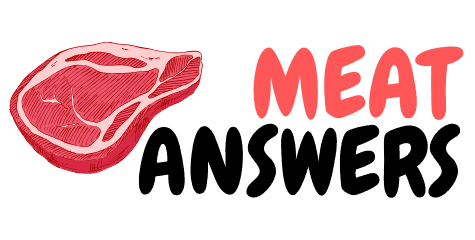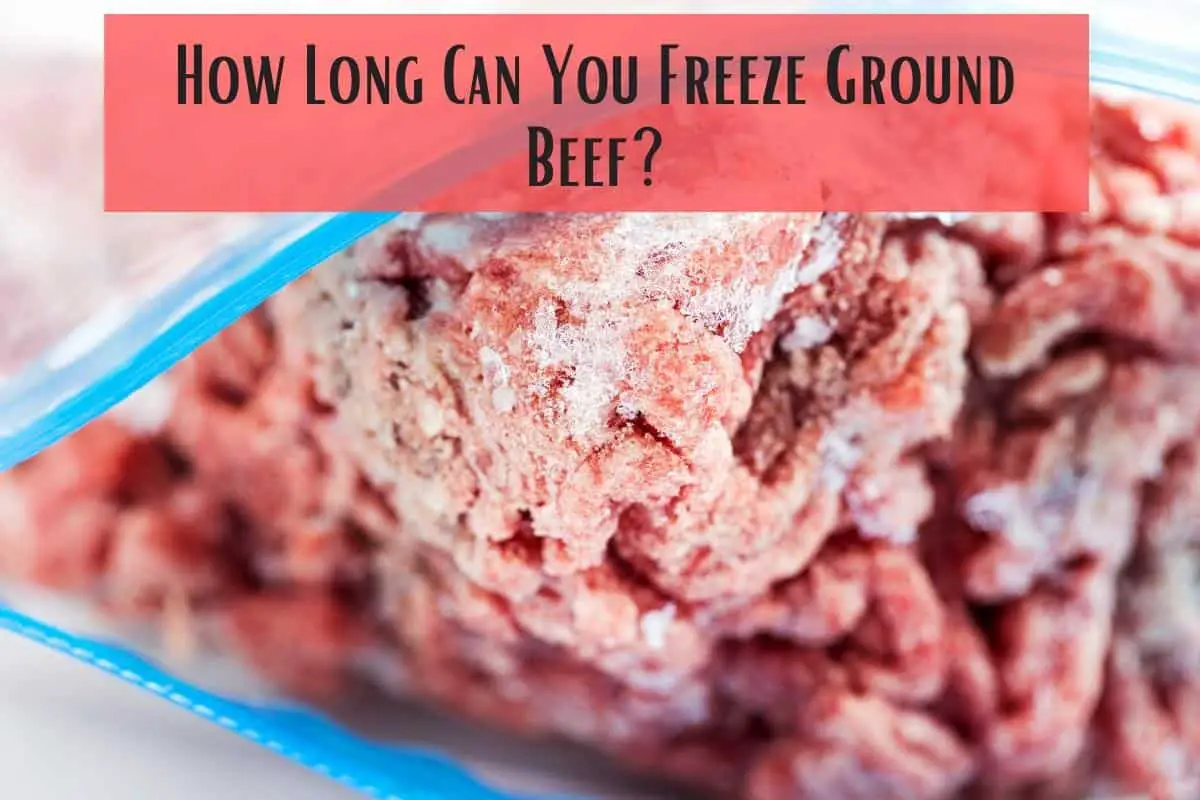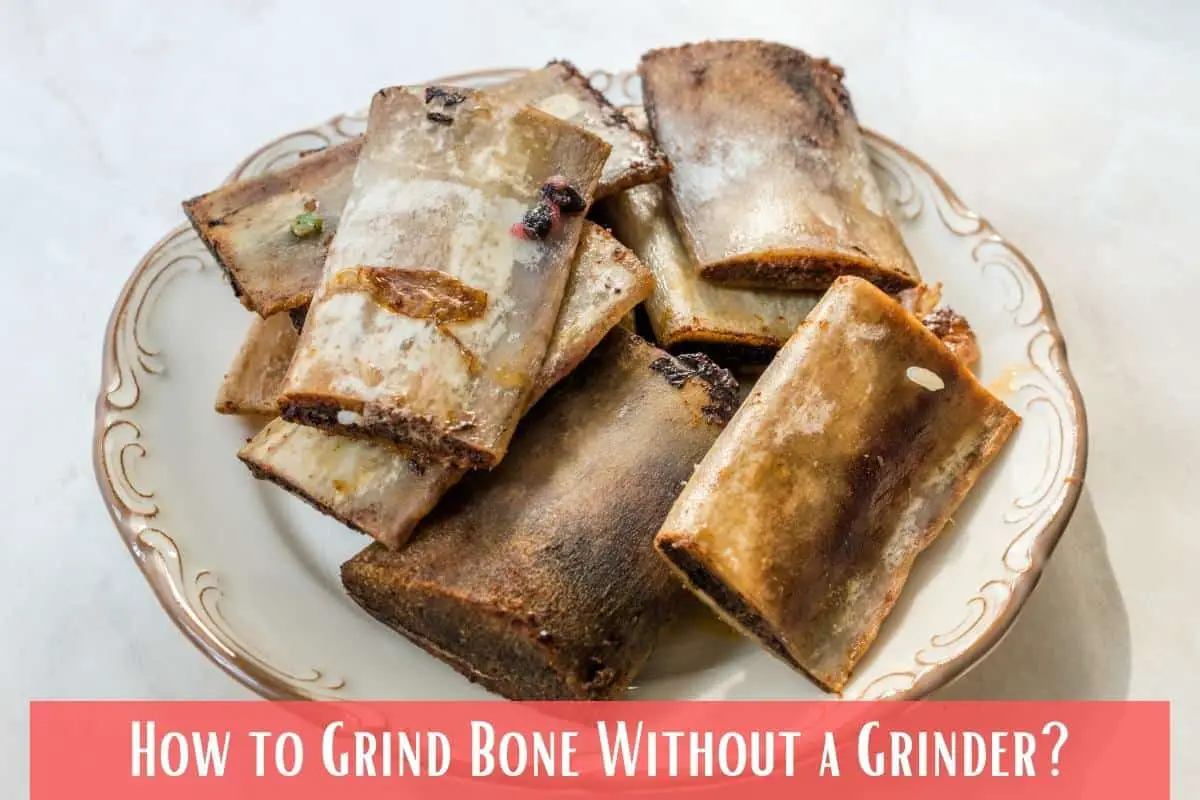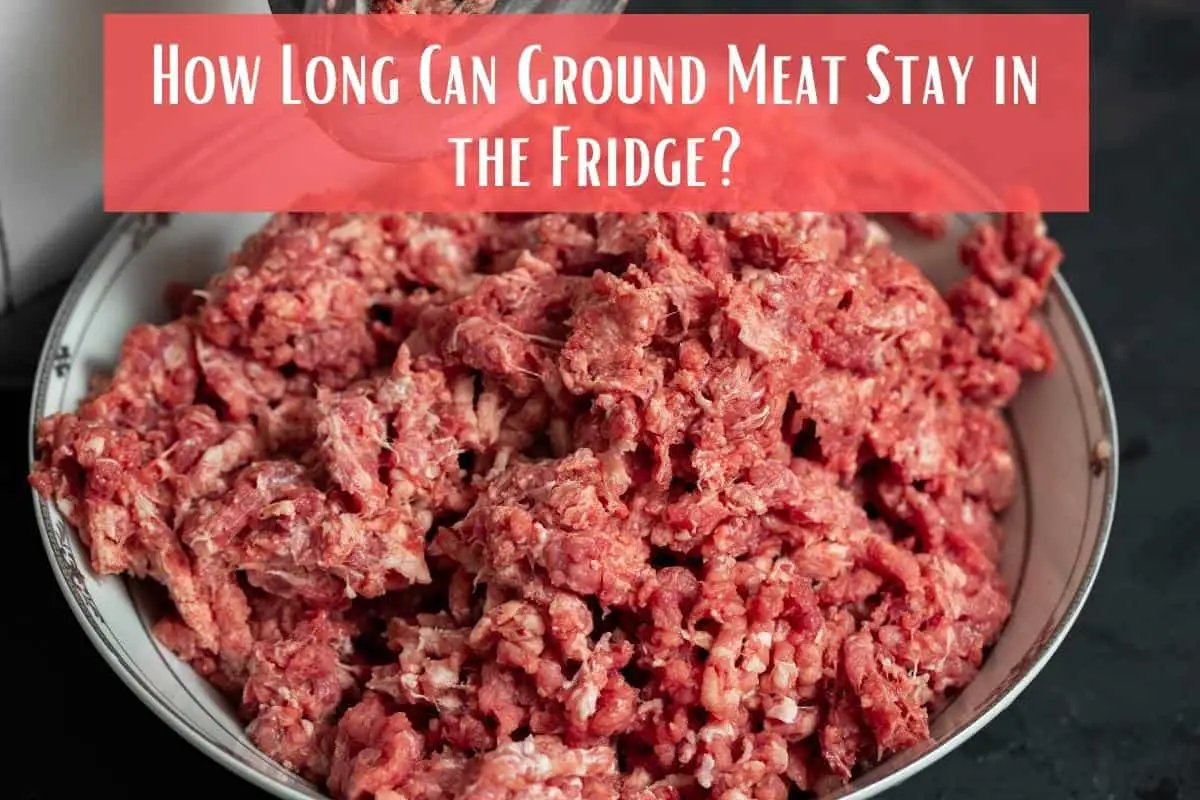When my good ol’ electric meat grinder broke down last year, I was struggling to replace it with a new one, owing to the shortage of stock during the pandemic.
However, the store did have a vast array of food processors to choose from, so I picked one up to see if it would deliver the same results as an electric meat grinder.
Even though a food processor may not give you the exact same texture and consistency as an electric meat grinder, it does render a good output.

Table of Contents
- 1 What Kind of Meat Grinding Can a Food Processor Do?
- 2 How Does Food Processor Compare to a Grinder for Grinding Meat?
- 3 Best Food Processors for Grinding Meat Reviews
- 4 What to Look for When Buying a Food Processor for Grinding Meat?
- 5 How to Prepare Meat for Grinding Using a Food Processor?
- 6 Tips for Getting A Better Meat Grind When Using a Food Processor
- 7 How to Clean a Food Processor After Grinding Meat?
- 8 Can you Grind Deer Meat in a Food Processor?
What Kind of Meat Grinding Can a Food Processor Do?
You can buy ground meat at the supermarket, but unless your butcher has made it to order, there’s no way of determining what you’re actually getting.
With a food processor, you can grind a variety of meats right in the comfort of your home including pork, beef, poultry, fish, and seafood.
How Does Food Processor Compare to a Grinder for Grinding Meat?
There are several differences between grinding meat in a food processor compared to a meat grinder, most notably:
Ground Meat Texture
The main difference between a meat grinder and a food processor is the final results. A meat grinder grinds meat evenly, and produces a good texture, whereas a food processor will not deliver the same consistent texture, and in worse cases may even produce a pasty texture.
Cutting Blades
A meat grinder is equipped with cutting blades that perform the grinding task. Food processors also come with different types of blades to chop, mince, mix or puree food.
The difference however between the two is that meat grinders come with grinder plates that dictate the final texture of the meat such as fine, medium, or coarse, whereas food processors won’t give you any texture.
Attachments
The best meat grinders come with grinder plates and several other attachments including sausage and kubbe makers. Food processors come with standard attachments such as cutting blades and discs for slicing or shredding the meat, so you won’t be able to grind meat to make specialty items such as sausages.
Rate of Ground Meat per Hour
Meat grinders are powered by robust motors, and can grind a large amount of meat quickly per hour. Food processors are also equipped with motors, but they will probably fail if you try to grind several hundred pounds of meat.
A good electric meat grinder such as the ALTRA meat grinder can grind two pounds of meat per minute, whereas you will not get the same speed with most food processor models.
Grinding Capacity
Meat grinders come with a food tray at the top, so you can continuously feed the meat through the grinder head, and collect the results in a collection bowl.
Food processors come with glass jars with integrated blades that allow you to grind a certain amount of meat at a time.
Best Food Processors for Grinding Meat Reviews
1. Breville Sous Chef Food Processor
The Breville Sous Chef food processor slots in at the #1 position on this list for several good reasons, starting with its large 12-cup capacity.
Further, it features a high-quality working jar that’s made from BPA-free plastic, along with a 5-inch wide feed cut chute for fewer grinds each time.
Apart from the 5-inch chute, the Breville Sous Chef offers two other chute options to select from—2 ¾” mid-feed chute and 1 ½” mini-feed to prevent foods from tipping over.
The Breville Sous Chef food processor is powered by a 1000-watt induction motor, making it a workhorse in its segment.
It weighs just 15.9 lbs, and measures 9.5 x 7.5 x 17-inches, allowing you to easily set it over your countertop.
The Breville Sous Chef food processor comes with an adjustable slicing disc that can be toggled between 24 settings, ranging from paper-thin (0.3 mm) to thick (8.0 mm) cuts.
Adding to its long list of features is its micro-serrated S-blade system that provides fast action, and consistent grinding or chopping.
The Breville Sous Chef food processor comes with an easy-to-use momentary pulse button, and a braking system that prevents the motor from operating unless its lid and bowl are locked properly in position.
Pros:
- Large 12-cup capacity
- BPA-free plastic jar
- 3 chute size options
- Momentary pulse button
- Adjustable slicing disc
- Micro-serrated S-blade system
- 1-year manufacturer warranty
Cons:
- Limited to 1 color option
2. Hamilton Beach Food Processor
Hamilton Beach is one of the leading names in the kitchen appliance space, and this food processor model is yet another hit addition to the company’s massive lineup of products.
It offers a generous 10-cup capacity, therefore can accommodate moderate loads of chopped meat without emptying it.
Adding to this, the Hamilton Beach food processor features reversible stainless steel discs for slicing and shredding, and a stainless steel S-blade for grinding meat, chopping, and making purees.
But that’s not all, the Hamilton Beach food processor robust is equipped with a 450-watt motor that can be adjusted between two speeds—high and low, giving you more control over the grinding process.
The Hamilton Beach food processor comes with a large feeding chute, resulting in less prep work, and a BPA-free, dishwasher-safe bowl.
It showcases a compact footprint, and comes with a handy scraper that basically does all the work for you.
Pros:
- 2 speeds
- 10-cup capacity
- 450-watt motor
- Reversible stainless steel discs, and S-blade
- Large feeding chute
- 1-year manufacturer warranty
Cons:
- Might not slice in uniform pieces at times
3. Homeasy Stainless Steel Food Processor for Meat
The Homeasy food processor is a budget-friendly appliance that doesn’t fall of key features. It is fitted with not one, but four super-sharp stainless steel blades, so you can chop as well as grind with one appliance.
It offers two modes to select from, and arrives factory fitted with a superior 350-watt motor.
Another noteworthy feature of the Homeasy food processor that makes it stand out from the crowd is its 4D design, which triggers both the upper and lower blades to evenly chop at an angle of 360-degrees.
The Homeasy food processor comes with a two-liter capacity stainless-steel bowl, which compared to certain glass bowls is much more durable.
It is easy to dissemble the Homeasy food processor to wash the accessories. The Homeasy food processor is fitted with a non-slip mat to hold it in place during use, and prevent damage to your countertop.
The Homeasy food processor arrives in an appealing finish, and is lightweight at just a little over 3 lbs.
Pros:
- 4-stainless-steel blades
- 350-watt motor
- 4D design with glass 2-liter capacity bowl
- Non-slip mat
- 2 modes and lightweight
Cons:
- Can’t be used to chop meat with small bones
4. Cuisinart FP-11GM Elemental 11 Cup Food Processor
The Cuisinart Elemental 11 food processor comes with a large 11-cup capacity bowl, making it easy to grind meat and chop other food items in one go, without having to refill frequently.
Unlike other food processors in its segment, the Cuisinart Elemental 11 appliance is appointed with a rubberized keypad, complete with pulse control that is easy to use, and wipe clean.
The Cuisinart Elemental 11 food processor is equipped with a 550-watt motor, so you can expect nothing less than superior performance.
It comes with a patented BladeLock system, which only turns the food processor on when the jar and lid are secured properly to the appliance.
The Cuisinart Elemental 11 food processor features a wide mouth tube, hence it can accept larger food items.
The package includes an adjustable slicing disc, reversible shredding disc, dough blade, and a three-year manufacturer warranty.
Pros:
- Patented BladeLock system
- 550-watt motor
- 11-cup capacity bowl
- Wide mouth tube
- Includes adjustable slicing disc, reversible shredding disc, and dough blade
- 3-year manufacturer warranty
Cons:
- Additional discs such as French fry not available
5. Oster Food Processor
The Oster food processor can be had in a choice of two variants, and boasts an appealing stainless-steel black finish.
Under its hood lies a 500-watt motor, which makes it easy to grind tough foods such as deer meat with ease.
The Oster food processor features a large five-inch-wide food chute to accommodate larger food items.
It comes with a food pusher to insert the food items including the meat easily into the food processor.
Furthermore, the Oster food processor comes with a large 10-cup capacity food bowl and locking lid, allowing you to grind more food at a time.
In the package, you also get a dough blade that kneads the bread, preventing you from performing the daunting task manually.
All the accessories of the Oster food processor can be stored conveniently in the bowl of the appliance.
Pros:
- 500-watt motor
- Large 10-cup capacity
- 5-inch-wide food chute
- Food pusher and dough blade included
- 1-year manufacturer warranty
Cons:
- Can’t be used to make almond butter or any type of peanut nut butter
What to Look for When Buying a Food Processor for Grinding Meat?
There are several factors to consider when buying a food processor for grinding meat including:
Size
Food processors can be ordered in sizes big and small, therefore the first thing is to determine is the amount of meat you will be grinding at one time.
If you’re going to grinding a small amount of meat, a small capacity food processor jar is an ideal option, but a large amount of meat will require a bigger jar such as the GE food processor.
The GE food processor comes with a large 12-capacity jar, and is equipped with a powerful 550-watt motor.
Adding to this, it offers three speeds to choose from, which can be selected with its onsite, easy-to-use controls.
Power
A food processor with a powerful motor will make it easy to grind meat faster, and with better consistency. The top end meat grinding food processors come with 300-watt to 1000-watt motors such as the Ninja BN601 Professional Plus Food Processor.
The Ninja BN601 food processor comes with a professional-grade motor that generates a whopping 1000-watts peak power.
It arrives with dedicated blades and discs for restaurant-quality results, and features four auto-IQ intelligent programs to select from.
The Ninja BN601 food processor boasts a nine-cup capacity, and comes with several different accessories including a feed chute lid and pusher, quad chopping blade, dough blade, reversible slicing and shedding disc, disc adaptor, and a 20-recipe guide.
Cooking tasks
A food processor offers much more versatility than a meat grinder, in that you can mince, chop, and even make dough for pizzas with a single appliance.
If you would like to perform tasks apart from meat grinding, look for a food processor that comes with the accessories needed for the job such as the KTMAII food processor.
The KTMAII food processor comes with a superior 500-watt motor, and allows you to shred cheese, slice veggies, and even puree for dips, etc.
How to Prepare Meat for Grinding Using a Food Processor?
You have to prepare the meat you will be grinding to avoid mushy, pasty results.
- Get started by cutting up the meat into smaller pieces.
- Next, put the cubes in a bowl, and then set in your refrigerator to chill the meat, and not freeze it. Doing so will ensure that the meat is ground and not pulverized.
- Remove the meat from the fridge or freezer, hit the pulse button on your food processor, check the results, and repeat this step if you haven’t achieved your desired results.
Tips for Getting A Better Meat Grind When Using a Food Processor
- I mentioned earlier that you should chill the meat before grinding in your food processor, but I forgot to add that you should also chill the parts of the appliance along with it such as the jar with blade.
- For grinding beef for hamburgers in a food processor, fill the jar of the appliance halfway with the chopped beef cubes, and pulse it up to 10 times in one-second pulses.
You can pulse more if the beef isn’t properly ground or it doesn’t hold together.
- Grind the meat right after you remove it from your fridge or freeze, because meat exposed to air can attract bacteria, resulting in food contamination.
- Regardless of the meat you are grinding, it’s important to fill the processor jar halfway, and work relatively quickly, so that everything stays cold.
- After grinding meat in the food processor, transfer it into a bowl, and check for any large pieces that may have escaped from the blades.
If you do find any large pieces, run them separately again in the food processor.
How to Clean a Food Processor After Grinding Meat?
Cleaning a food processor could be an easy task or might require a bit of elbow grease, depending on the model you buy.
Some food processor models come with dishwasher-safe parts, so you can easily wash them in your dishwasher after each use.
Parts of the food processor to clean after each use are:
Blades – the blades of a food processor are made from metal such as aluminum, so you will have to wash them by hand.
First, remove the blade from the jar, and start scrubbing from the center to the exterior edge to prevent any injury.
Container and lid – the container and lid of your food processor are probably dishwasher safe, making them easy to clean.
But since you are grinding meat in a food processor, there are greater chances of stubborn fat and sinew getting stuck, so I highly recommend that you use a couple of drops of dishwashing soap for thorough cleaning.
If you notice any smell coming from your food processor, soak the parts in a baking soda mixture—one part baking soda and one part water for roughly 15 minutes to 20 minutes.
Lastly, remove the parts from the baking soda, rinse, and air dry. You can now put your food processor away until the next use.
Can you Grind Deer Meat in a Food Processor?
I’ve always used a big meat grinder for venison because its’s tough meat, but I gave it a shot in my food processor, and with a little trial and error, the results were surprisingly great.
- For grinding deer meat in your food processor, use the S-shaped steel blade.
- Be sure to only grind a very small amount of meat at one time, even if you have a large capacity meat grinder, because you don’t want to add a lot of stress on the blades.
- If your food processor is struggling with grinding the deer meat, you will have to remove the sinew (white streaks in the meat) and start over.
- Smaller deer meat pieces take approximately 10 seconds to grind, and 30 seconds for larger ones.
- The result may be pasty, but it will be the perfect consistency to make items such as spaghetti, chili, and much more.









